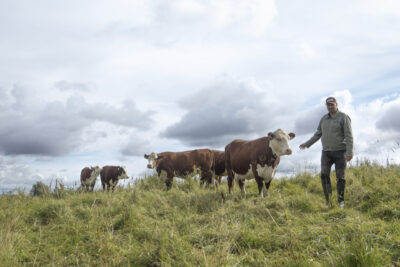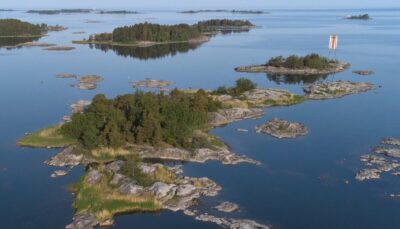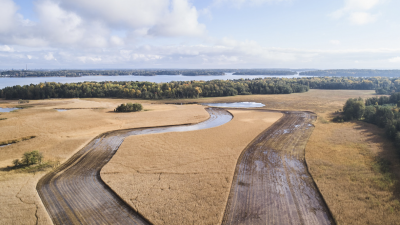Art brings light to beautiful and vivid habitats at Helsinki Biennial 2025
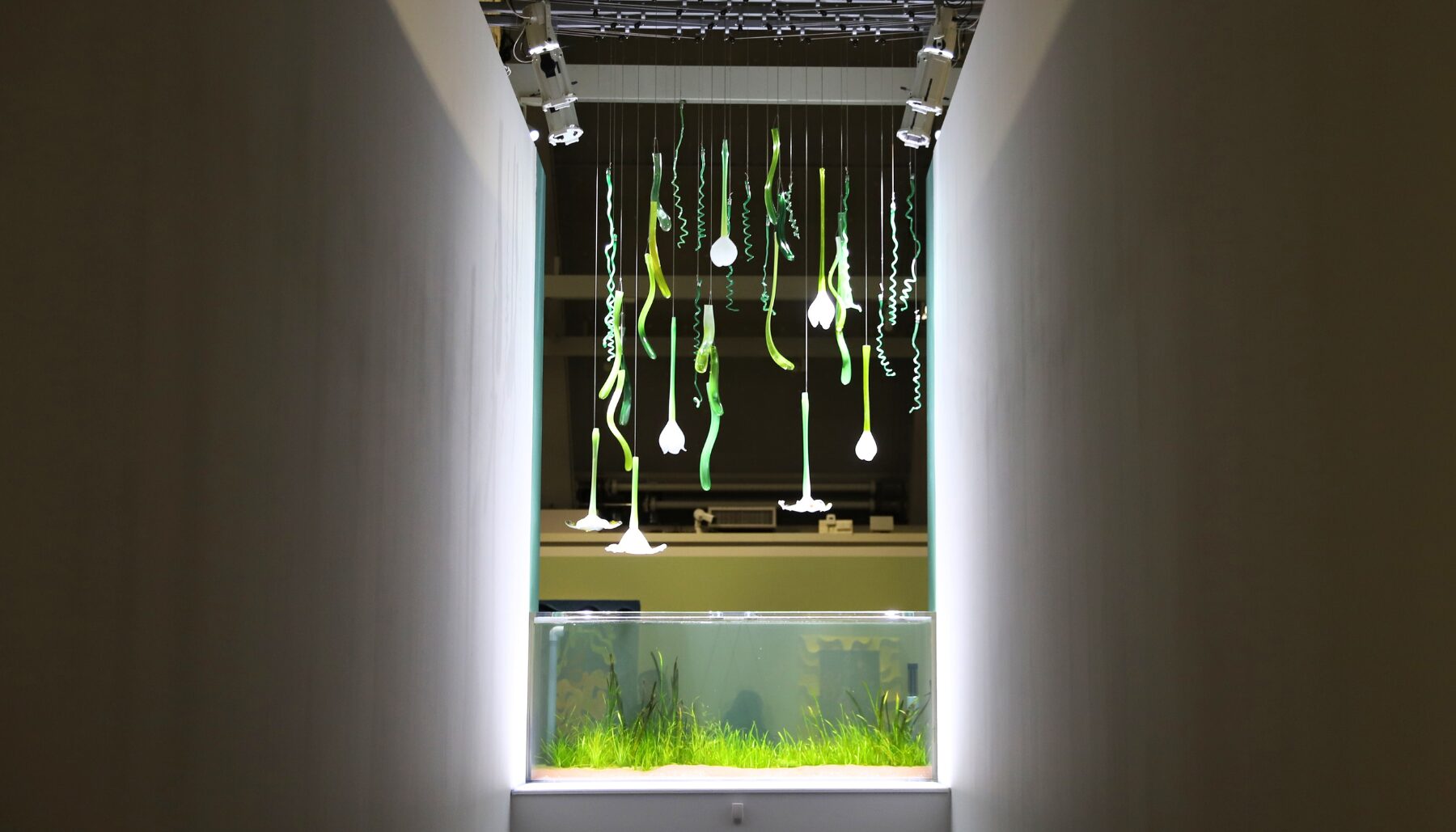
Text
Common eelgrass, Zostera marina, is a seagrass species that can be found in the Baltic Sea. Artists of LOCUS, Thale Blix Fastvold and Tanja Thorjussen, created an artwork for Helsinki Biennial 2025, exploring and celebrating the species. During their visit to Tvärminne Zoological Station, the artists met with Camilla Gustafsson, a long-time researcher of common eelgrass.
The Oslo-based artists Thale Blix Fastvold and Tanja Thorjussen are one of the artists of Helsinki Biennial 2025. As a partner of the event, John Nurminen Foundation has supported and engaged in the work progress of LOCUS – for instance, by facilitating travel to Tvärminne to explore common eelgrass.
Fastvold and Thorjussen have long engaged with non-human creatures – such as pollinators and plants – in both river and marine environments. Their deep interest in common eelgrass, however, began during a visit to Tvärminne Zoological Station, where they encountered the plant firsthand.
“It was not so much that we reached out to eelgrass, it was more like eelgrass reached out to us”, Thorjussen says.
Common eelgrass – a key species of the Baltic Sea
Tvärminne Zoological Station is a marine research station of the University of Helsinki, located in the central/northern Baltic Sea, near the city of Hanko. The research at the station dates to 1902 when it was established.
Camilla Gustafsson, an academy research fellow at the station, studies marine ecosystem functioning, with a focus on seagrasses and other aquatic plants.
“Common eelgrass is a key species in the Baltic Sea and plays an important role in the shallow coastal ecosystems. The common eelgrass is a seagrass, an aquatic plant that forms underwater meadows. These meadows provide habitat and shelter for many species, produce oxygen, bind nutrients, and stabilize bottom sediments. Common eelgrass also sequester carbon, although the extent varies depending on location and growing conditions”, Gustafsson explains.
Variety of segrass species
Gustafsson explains that there are different kinds of seagrass species around the world. Some species are large and slow-growing, while others are smaller and faster-growing. For example, the Mediterranean seagrass species, Posidonia oceanica, is a kind of climax species: it is large, grows slowly and is long-lived.
The Baltic Zostera marina is somewhere between the two extremes: not the smallest and fastest-growing, but it is not quite as large and slow-growing as the Mediterranean grass either.
What all seagrasses have in common is that they are adapted to salty waters and have underground stems (rhizomes) and roots that help them anchor to the seafloor and provide them with nutrients for growth. Like many plants on land, seagrasses reproduce by flowers and seeds, but also asexually (clonally) by growing runners along the seafloor similarly to, for example, strawberry plants.
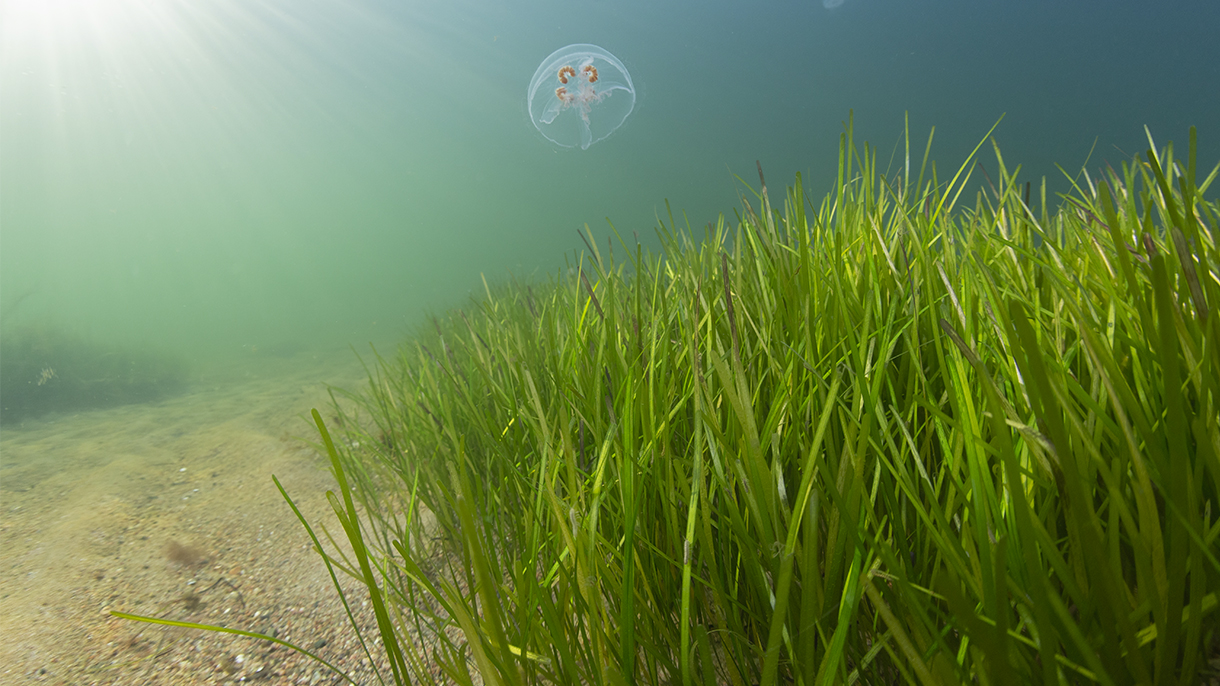
Imagining a bright future for common eelgrass
Common eelgrass is threatened by a cocktail of anthropogenic stressors: from the constant pressure of eutrophication to marine heatwaves intensified by climate change.
However, in their Biennial artwork, Fastvold and Thorjussen have chosen to create positive imaginations and visualizations for common eelgrass.
“When you love something, you want to take care of it. The stories that humans tell and hear shape our understanding of both the past and the future. We need to be able to envision a future to work towards”, Thorjussen says.
When visiting Tvärminne in 2024, the artists learned about eelgrass through the scientists and their research.
“We felt that, in a way, they are looking at dystopian future scenarios: what will happen if the water gets warmer or fresher. For us it was a good starting point to approach the future from a positive perspective. As artists, we can and like to ask questions that are a bit different and creative”, Fastvold explains.
The flowering of Zostera marina
The focus on positive scenarios led the artists to explore how common eelgrass reproduces. In the Baltic Sea, common eelgrass spreads by runners along the seafloor, by cloning itself.
“We started asking questions like, ‘Why?’ and ‘Would it be better for common eelgrass to reproduce sexually as well?’ Through some research papers we discovered that reproducing sexually would increase the genetic diversity of eelgrass, which could help it be more resilient and better able to survive different climate change scenarios” Fastvold explains.
While not based on scientific eelgrass flowers, the artists wanted to imagine the flowers of common eelgrass, inspired by their reproduction. This kind of speculation is at the very heart of their artwork.
The seagrasses often react to heat by flowering, yet in the central and northern Baltic Sea the seeds never develop into viable plants.
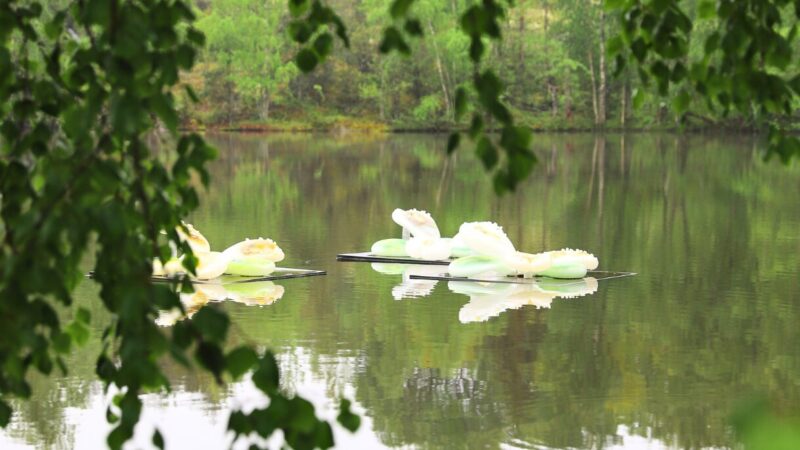
Myths meet scientific information
The artwork of LOCUS includes a sound work – a spell to honor Zostera Marina. It takes inspiration from a 4400-year-old poem written by Enheduanna to Sumerian goddess Inanna.
“We were inspired by this ancient text that was created thousands of years ago and wanted to bring Zostera Marina (the goddess) to light in a mythological way. So, we used the rhythm and structure of the hymn as a base and incorporated phrases and words from scientific papers that Camilla provided us to create the sound work. Then we of course added some magic of our own”, Thorjussen says.
The poem is read by the artists in unison with a hauntingly beautiful sound. In the background you hear underwater sounds the artists recorded in areas where eelgrass grows: in Tvärminne and in the port of Helsinki, where some industrial sounds can also be heard.
The Zostera Marina’s Song of Increase concludes with words that offer a sense of calmness:
We see futures of eelgrass meadows already thriving!
We see futures of healthy waters and rivers
We see a Baltic Sea flourishing and flowering in peaceful abundance
We see you Zostera
This Song of increase is yours Zostera
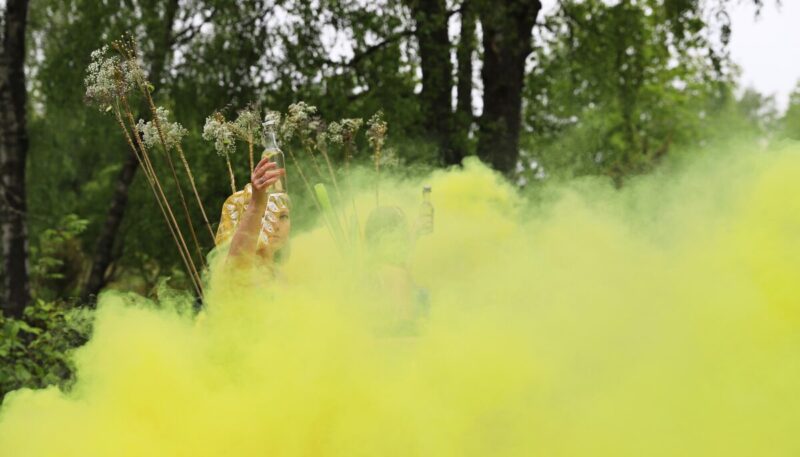
Hope and emotion can keep us moving
Fastvold and Thorjussen wish to give people hope – and even deeper, love – towards the underwater life and Zostera marina.
“We want people to feel that, despite the worrying scenarios and challenges, decision-makers, individuals and society at large can take meaningful action”, Fastvold says.
But does Camilla, whose research largely centers on environmental change, still have hope?
“I cannot just give up on hope – I want to believe that things will take a turn for the better. It would also be beneficial for people to hear and see that the Baltic Sea also has beautiful and vivid habitats. The Baltic Sea holds so much worth protecting, and its wellbeing should be a concern”, Gustafsson says.
When data and facts no longer spark sufficient action, storytelling and evocative expression can help us move forward.
Helsinki Biennial 2025 takes place from 8 June to 21 September across three venues: Vallisaari island, HAM Helsinki Art Museum, and, for the first time, Esplanade Park in central Helsinki.
The work of LOCUS can be experienced at Helsinki Biennial in Vallisaari and HAM Helsinki Art Museum.
